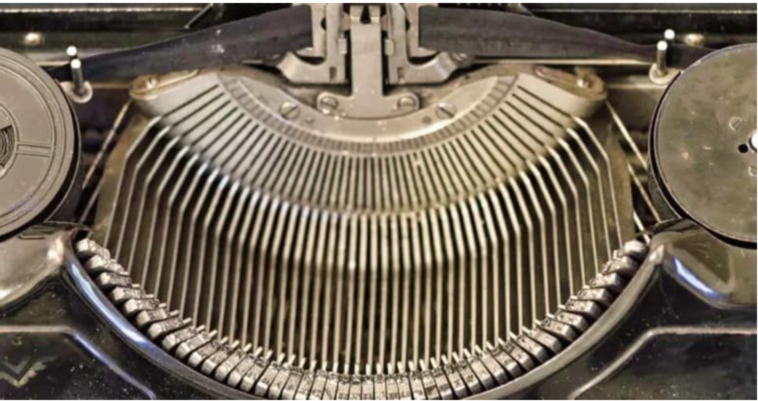This one stands out because my mother was a journalist. Writer of type. They were breathtaking. I remember sitting on my mother’s lap as she typed. The fragrance of pареr and ink was delightful. They had so many models, it was like an art piece… Have you got a typewriter?
A Nostalgic Journey Through the History and Legacy of Writing Machines

In an age dominated by digital devices and touchscreens, the simple typewriter serves as a sentimental reminder of a bygone era of communication. Typewriters, which were once indispensable instruments for writers, journalists, and professionals, have left an unmistakable effect on history. In this post, we’ll go back in time to investigate the intriguing world of typewriters, their growth, effect, and ongoing legacy.
The History of Typewriters:
The concept of a mechanical writing machine dates back to the 18th century, although actual typewriters did not appear until the 19th century. The Sholes and Glidden typewriter, often known as the Remington No. 1, was released in 1873 as the first commercially successful typewriter. This invention represented a great advancement in the mechanization of writing.
Early typewriters employed a “QWERTY” keyboard layout, which is still used on computers and gadgets today. This arrangement was created to avoid commonly used letter combinations from jamming in mechanical typewriters.
Communication and Society Impact:
The invention of the typewriter had a significant impact on communication and society. Here’s how it’s done:
Typewriters transformed the speed and efficiency of writing and document production. Professional typists might create papers faster than handwritten copies, increasing office and commercial productivity.
Document Standardization: Because each character was created with regular accuracy, typewriters introduced a level of consistency in documents.
This was particularly critical for legal and official papers.
journalistic and publishing: The typewriter was extremely important in the journalistic sector. Reporters and writers could produce text more quickly, resulting in speedier news transmission and the growth of newspapers as a key source of information.
Access to Writing: Typewriters made writing more accessible to a wider range of people. As the price of typewriters fell over time, more people were able to engage in professional writing and correspondence.
Archiving and Preservation: Typewritten texts were more durable than handwritten manuscripts. This improved archival quality has aided in the preservation of historical documents and literary works.
A Lasting Legacy:
While computers and digital gadgets have mostly supplanted typewriters, their legacy continues on in numerous ways:
Vintage typewriters have become sought-after collector’s goods and antiques, valued for their unique designs and historical significance.
The clacking sound of typewriter keys and the tactile experience of typing elicit a sense of nostalgia. For creative inspiration, some authors still enjoy the tactile feel of typewriters.
Artists and designers employ typewriter writing into their work, combining classic beauty with modern innovation.
Typewriters have appeared in literature, movies, and art, signifying many eras and giving a feeling of timelessness.
Writing Retreats and Workshops: Some writing retreats and workshops provide typewriters as instruments to help with creativity and focus.
The typewriter, a mechanical marvel that revolutionized communication, is still an enthralling piece of history. Its progress from crude prototypes to sleek, practical gadgets has had an impact on how we create and consume textual information.
While technology has advanced past the era of typewriters, their legacy continues to inspire writers, artists, and enthusiasts. Typewriters remind us of the physical relationship between typing and the creation of words on paper, providing an eternal link to our literary legacy.


